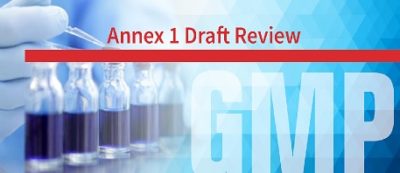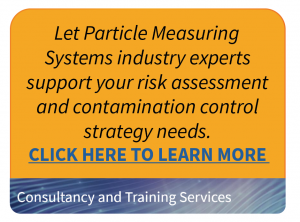How to define a Contamination Control Strategy (CCS)
 In part 1 of this blog series we learned how contamination is defined and what it means to control potential contamination. In Part 2 we will talk about how to define a Contamination Control Strategy (CCS) including how the new EU GMP Annex 1 draft guidelines define a CCS.
In part 1 of this blog series we learned how contamination is defined and what it means to control potential contamination. In Part 2 we will talk about how to define a Contamination Control Strategy (CCS) including how the new EU GMP Annex 1 draft guidelines define a CCS.
How do the guidelines define a CCS?
Annex 1 requires designing an effective contamination control strategy (CCS) based on a scientific assessment to understand the process and to apply risk management principles. The latest Annex 1 draft frequently uses the terms “risk” “justify” and “strategy”, underlying the importance of these concepts. For Pharmaceutical Manufacturers, understanding this new approach is critical. As reported in the new draft of Annex 1:
Manufacture of Sterile Products #Ref. Ares(2020)1024161 – 18/02/2020:
“Contamination Control Strategy (CCS) – A planned set of controls for microorganisms, pyrogens, and particulates, derived from current product and process understanding that assures process performance and product quality. The controls can include parameters and attributes related to the active substance, excipient and drug product materials and components, facility and equipment operating conditions, process controls, finished product specifications, and the associated methods and frequency of monitoring and control”.
“Contamination Control Strategy (CCS) should be implemented across the facility in order to define all critical control points and assess the effectiveness of all the controls (design, procedural, technical and organizational) and monitoring measures employed to manage risks associated with contamination. The CCS should be actively updated and should drive continuous improvement of the manufacturing and control methods”.
Meaning that they are not a measure or an In Process Control (IPC). These are process phases is where there is identified risk. In accordance with the recommendations, the method of detection of contamination should be scientifically justified to ensure that contamination is detectable.
To summarize, the key takeaways of the Annex 1 draft are:
- Process understanding
- Risk evaluation assessment
- Contamination control strategy
Want to read more? Jump to other released PMS posts in this series:
- Part 1 of 4: How is Contamination Defined?
- Part 2 of 4: What do the guidelines say about CCS? (You are here!)
- Part 3 of 4: How to define the potential root causes of contamination.
- Part 4 of 4: How to design a cleanroom according to Sterility Assurance Principles
Learn more… Get the full paper here.
Learn how Particle Measuring Systems‘ Cleanroom Advisory Services Team can help you identify problems and suggest solutions to preserve the high quality of your products and processes.


